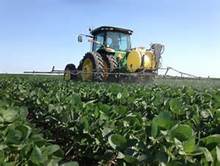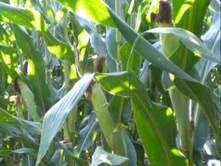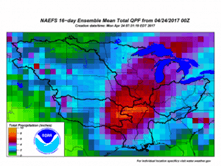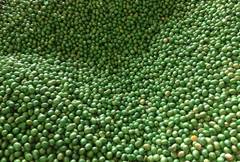Good afternoon,
Planting has begun full time in Hardin County this week. Many acres of corn have been planted and some soybean fields have been seeded. The Hardin County OSU Extension Soybean Population Plot has been seeded near Alger with test rates of 60,000, 90,000, 120,000, 150,000, 180,000, and 210,000 seeds per acre in 15 inch rows. Thanks to cooperating farmer Paul Ralston for agreeing to this on-farm research. Photos are posted on the Hardin County OSU Extension Facebook page. Burndowns, tillage, fertilizer, and manure applications have been common activity around the county as the weather has allowed for field work earlier in the calendar year this season.
Wednesday, May 3 there will be a Pasture Walk program at the farm of Luke and Holli Underwood on County Road 155 near Ridgeway beginning at 6:00 pm. See the related article below and the attached flyer for more information about this forage event being led by Megan Burgess of the Hardin County NRCS office. Livestock operations that utilize grazing on their farm should find this program useful and will get a free grazing stick as part of the event. Gary Wilson, retired OSU Extension Educator from Hancock County will be assisting with this program that will be held in a pasture field.
The Hardin County OSU Extension office is trapping armyworm and black cutworm in the county this year as a way of determining the level of activity in the area. This trapping is being done in the spring months in addition to the western bean cutworm traps that are set around the county in the summer. Traps will be set around the county in three locations to check for true armyworm and black cutworm activity. These traps will be checked weekly and counts reported to OSU entomologists to make recommendations for management and control of these pests so they don’t become an economic problem in corn. If you are a farmer who is interested in placing traps near your field, you are asked to call the Hardin County Extension Office at 419-674-2297 or email badertscher.4@osu.edu so that placement of traps can be made. See the attached news article for more information about the damage caused by armyworm and black cutworm.
Other upcoming events this next week include Farm Bureau meeting on Tuesday, May 2 starting at 7:00 pm at Ag Credit. Join us for Ag Council breakfast on Friday, May 5 starting at 7:00 am at Henry’s Restaurant to find out about what we learned from the 2016 Corn Nutrient Placement Plot that was near Dunkirk. The Hardin County Fairboard will be meeting on Saturday, May 6 starting at 7:30 pm at the fair office. See the articles below for ag crops information that you may be interested in reading.
Mark
Still trying to figure out what to do with dicamba in Xtend soybeans this year? – Mark Loux
Even if you are planting RR Xtend soybeans, the answer to this could be – maybe nothing. A number of growers have told us that even though they are planting RR Xtend soybeans, they plan on “letting the dust” settle this first year and stay with their regular herbicide program. And then of course there are also some solid reasons to use dicamba in a preplant or postemergence treatment, depending upon what has been done in the field already and whether previous practices have been ineffective for control of certain herbicide-resistant weeds. Go to https://agcrops.osu.edu/newsletter/corn-newsletter/2017-08/still-trying-figure-out-what-do-dicamba-xtend-soybeans-year to read more.
Facts about Early-Season Wheat Diseases – Pierce Paul
It has been cool, wet, and very humid so far this spring – perfect conditions for early season diseases like Septoria tritici blotch and powdery mildew to develop. Both of these diseases usually become established in the fall, thus getting an early start in the spring, particularly if winter conditions are mild. Here are a few more facts about Septoria tritici blotch and powdery mildew. Go to https://agcrops.osu.edu/newsletter/corn-newsletter/2017-09/facts-about-early-season-wheat-diseases to read more about Septoria and powdery mildew in wheat.
Getting corn off to a good start – planting depth can make a difference – Peter Thomison
Planting depth recommendations for Ohio are 1.5 to 2 inches deep to ensure adequate moisture uptake and seed-soil contact. Deeper planting may be recommended as the season progresses and soils become warmer and drier, however planting shallower than 1.5 inches is generally not recommended at any planting date or in any soil type. When corn is planted 1.5 to 2 inches deep, the nodal roots will develop about 0.75 inches below the soil surface. However, at planting depths less than 1 inch, the nodal roots develop at or just below the soil surface. Click on https://agcrops.osu.edu/newsletter/corn-newsletter/2017-10/getting-corn-good-start-planting-depth-can-make-difference to finish reading this article about planting depth of corn.
Big swings in weather pattern ahead – Jim Noel
April will end warmer and wetter than normal. A series of storms will impact Ohio and surrounding areas later this week into next week. This will mean wetter than normal conditions into the first week of May. Temperatures will remain above normal as well. Rainfall on the attached graphic shows the heaviest will fall in central sections of the corn and soybean belt. Rainfall in Ohio will range from 2-4 inches for the next 2 weeks with heaviest totals in western areas of Ohio. Normal is about 2 inches. The first week of May will be mild with wetter than normal weather. The middle of May will dry out and cool down before a warm finish to the month. The outlook for summer still looks warmer than normal with rainfall highly variable with a tendency toward drier.
Pasture Walk to Evaluate Forages – Mark Badertscher
A farm near Ridgeway, Ohio will serve as the location for the Hardin County Pasture Walk on Wednesday, May 3. This program will be from 6:00-7:30 pm in a pasture located at 18917 County Road 155, Ridgeway, OH 43345. A pasture walk is an educational program for producers who would like to learn how to best manage forages in their pastures and evaluate best management practices for grazing. Megan Burgess of the Hardin County Natural Resources Conservation Service (NRCS) will be the main instructor along with Gary Wilson, retired Extension Educator from Hancock County. Go to https://agcrops.osu.edu/newsletter/corn-newsletter/2017-10/pasture-walk-evaluate-forages to read the rest of this article.
Mark A. Badertscher
Agriculture and Natural Resources Educator
OSU Extension Hardin County
1021 W. Lima Street, Suite 103, Kenton, OH 43326
419-674-2297 Office
hardin.osu.edu
















